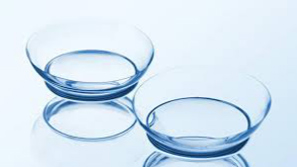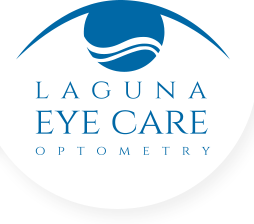Specialty Contact Lenses

Our office has devoted itself to the restoration of vision and comfort lost as a result of a variety of eye diseases and post- surgical complications. What distinguishes us:
- Expertise – University post-graduate residency specialty contact lens training and certification.
- Experience – Decades of successful management of complex vision problems using advanced contact lens designs.
- Technology – that is state of the art, that includes spectral domain optical coherence tomography (SD-OCT) for precision fitting , as well as high-definition digital biomicroscopic imaging for optimal prescribing and documentation.
- Reputation – patients travel from far and wide, including many from out of state for our expertise and positive outcomes. Many patients are referred to us by other eye doctors.
- Liaison with referring physicians including other ophthalmologists and optometrists for better patient outcomes.
- Exceptional customer service including guaranteed fit and facilitating insurance coverage whenever possible.
Specialty contacts are sometimes categorized as “medically necessary” – meaning that the patient cannot achieve adequate vision utilizing eyeglasses or conventional contact lens correction. The term “Vision rehabilitation” through contact lenses has been used to restore near normal vision to injured eyes from trauma, burns, post-surgical complications or other eye diseases.
Scleral Contact Lenses
-

Da Vinci’s design 1508 -

Scleral lenses 2019
Scleral lens designs can be a game- changer for many patients with complex vision problems. They were first proposed in 1508 by Leonardo da Vinci to neutralize the optical power of the cornea, by enclosing a liquid reservoir over its front surface. They were not widely used due to fitting challenges. With the advent of highly oxygen permeable polymer materials and computerized lathe technology, these specialty contact lenses are back.
Because of their large size, scleral lenses are typically extremely comfortable, and can provide better vision than many surgeries, standard contact lenses and eyeglasses. They can postpone or eliminate the need for corneal surgery. Their benefits over other options can be divided into two main areas:
Vision Restoration of damaged corneas from a variety of abnormalities:
- Keratoconus
- Pellucid marginal degeneration
- Post – Radial Keratotomy (RK surgery)
- Post – LASIK corneal ectasia
- Post – Penetrating or Lamellar keratoplasty (corneal transplant surgery)
- Corneal Scarring – from ocular trauma, corneal ulcers and infections such as herpes simplex keratitis
- Salzmann Nodular degeneration and Terrien’s Marginal degeneration
- Other corneal dystrophies
Corneal protection against extremely dry eyes – by creating a comfortable “liquid bandage” over the front surface of the eye. These ocular surface diseases include:
- Keratoconjunctivitis sicca (KCS)
- Sjogren’s syndrome
- Ocular graft-versus disease
- Stevens-Johnson syndrome
- Meibomian Gland disease (MGD) and evaporative dry eyes
- Neurotrophic corneas
- Exposure keratitis from lagophthalmos, exophthalmos and Bell’s Palsy
- Eyelid disorders such as entropian, ectropian, triachisis, symblepharon and coloboma
- Lacrimal Gland disease
- Ocular cicatricial pemphigoid
Scleral contact lenses are more complex than standard lenses. For example, the back surface of the lens requires five or more separate custom curves to properly contour the eye. Special design features, such as the use of reverse geometry, toric, bitoric, quadrant-specific, notched edges and multifocals are sometimes necessary. This requires specific expertise, training and experience on the part of the doctor. Since the fitting process can take more time than standard contact lenses, some patience on the part of the doctor and patient alike is necessary. However for most patients who qualify for scleral lens correction, the end results can be exceptionally rewarding.
Corneal Refractive Therapy (CRT), Corneal Reshaping, Orthokeratology (Ortho-K) and Myopia Control
These are custom rigid oxygen permeable contact lenses worn during sleeping hours only, for gentle, temporary reshaping of the cornea. This provides for clear vision all-day long without the need for glasses or contact lenses. Regular over-night wear is required to maintain the effect indefinitely. CRT contact lenses can provide ideal vision correction for active children, especially those involved with sports. Since they are only worn at night, the lenses never leave the home. Also children needing protective eyewear, can now use less expensive non-prescription sports glasses. Several international studies* suggest that CRT lenses may also slow down or stop the progression of myopia (near-sightedness) in children and adolescents.
It is estimated that myopia affects a quarter of the world’s population, 1 in 3 in the USA and 1 in 2 in some Asian countries. Genetics plays a role, as well the wide-spread use of computers and electronics. The incidence of myopia is rising fast enough to be considered an epidemic. The danger is that severe myopia increases the risk of retinal detachment, glaucoma and other serious eye disorders.
For adults, some careers require good vision without the dependence on eyeglasses and regular daytime wear contact lenses. CRT lenses might be an excellent option for these individuals since the lenses are only worn during sleep. They can also benefit people who have failed with traditional daytime contact lens wear.
Since gaining Food and Drug Administration (FDA) approval in 2002, CRT lenses are recognized as the gold standard for safety in corneal reshaping. Over a million lenses have been dispensed worldwide with a proven safety track record.
Custom Soft Contacts
Custom soft contacts from Flexlens, Kerasoft and NovaKone can be useful for the following conditions:
Extreme near-sightedness (myopia) or far-sightedness (hyperopia), high or irregular astigmatism, aphakia, keratoconus that is mild to moderate, and for infants with congenital vision disorders. There also new toric multifocal designs for patients with both astigmatism and presbyopia.
Custom tinted soft lenses are available for ease of handling and for certain sports purposes to reduce glare without the use of sunglasses.
Rigid Gas (Oxygen) Permeable Lenses (RGP’S)
These can be worn for normal eyes, but also for patients with astigmatic, bifocal or multifocal corrections, dry eyes, keratoconus and post-surgical conditions. We use custom spherical, aspheric, bitoric, bifocal, multifocal designs, as well as reverse geometry and Rose K designs, among others.
Synergeyes Hybrid Contact Lenses
These lenses have a rigid central optical zone with a soft peripheral skirt to combine the crisp vision of a rigid lens with the comfort of a soft contact lens. They are useful for a variety of normal and unusual vision conditions including astigmatism, multifocal or progressive needs, keratoconus and post-surgical uses. We use the Duette, Ultrahealth, Clearkone, KC and Post-Surgical series of hybrid designs.
Piggyback Lenses
Some of our patients with unusual conditions do very well with a “piggyback” system which involves wearing a rigid oxygen permeable lens on top of a soft disposable contact lens. These provide good comfort and vision with better lens centration and protection against mechanical irritation of the irregular cornea.
Sports
Custom- tinted soft contact lenses are available to create a glare-reducing and contrast- enhancing effect for outdoor sports without the use of sunglasses. Scleral contact lenses are helpful for a variety of water sports such as surfing, scuba, snorkling, waterpolo and others due to the stable, comfortable vision and unlikelihood of lens loss.
Pharmaceutical Delivery, Telescopes, Biometrics Photography
Some futuristic contact lenses are being investigated as drug delivery vehicles, as miniaturized telescopes for partially-sighted people, or to track blood glucose and intra-ocular pressures for diseases such as diabetes and glaucoma. They may also be used as miniaturized cameras in the future.
Cosmetic
Hand painted designs for disfigured eyes, corneal scarring, atrophia bulbi, aniridia, albinism, strabismus and special effects.
Special Effect and Theatrical Lenses
